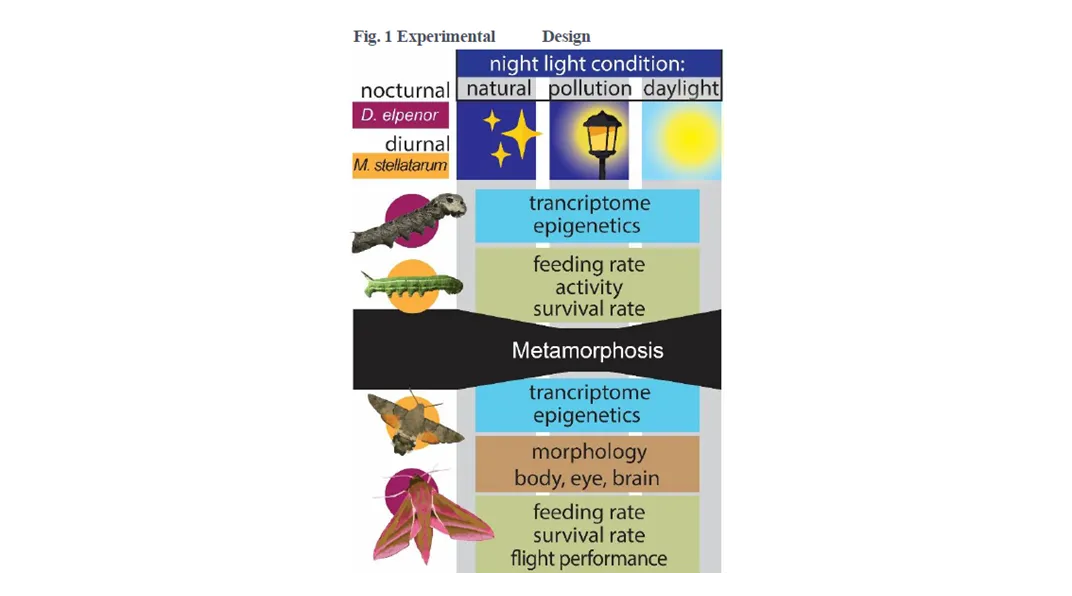Living in night and day: genomics of light adaptations in moths as caterpillars and adults
Hector RCD Awardee Anna Stöckl
Hector Fellow Axel Meyer
Jun.-Prof. Dr. Anna Stöckl and Prof. Dr. Axel Meyer (University of Konstanz) are leading this interdisciplinary project investigating how moths adapt to artificial light at night. The study will investigate how exposure to light during the caterpillar stage affects vision, brain structure and behavior in adult moths. By integrating genomics, neuroanatomy, and behavioral research, the team is investigating changes in gene expression, neural plasticity, and sensory adaptation. The project applies methods such as transcriptomics, epigenetics, and morphometric analysis across species. The research provides a comprehensive understanding of how animals cope with rapidly changing environments, particularly anthropogenic influences such as artificial lighting. This approach not only advances ecological and evolutionary research, but also contributes to conservation efforts by identifying the effects of light pollution on nocturnal species.
The project Living in Night and Day: Genomics of Light Adaptations in Moths as Caterpillars and Adults investigates the effects of artificial light at night on sensory adaptations in moths. Led by Jun.-Prof. Dr. Anna Stöckl and Prof. Dr. Axel Meyer (University of Konstanz), this research integrates evolutionary biology, neuroscience, and ecology to uncover how light exposure during early developmental stages affects vision, neural structures, and behavior in adult moths.
Many nocturnal species, especially insects, face increasing environmental challenges due to artificial light. While previous studies have examined behavioral changes in response to light pollution, this project uniquely examines the molecular and neural basis of these adaptations. It focuses on how caterpillar exposure to artificial light affects gene expression, eye and brain morphology, and behavioral responses in adult moths. The research uses advanced genomic techniques such as transcriptomics, epigenetics (DNA methylation), neuroanatomical analysis, and behavioral tracking in controlled environments.
The study involves two model species: the elephant hawkmoth (Deilephila elpenor), a well-studied nocturnal species with extreme low-light vision, and the hummingbird hawkmoth (Macroglossum stellatarum), a diurnal species with some larval nocturnal feeding activity. The project examines whether light-induced changes during metamorphosis persist into adulthood and how different species exhibit different levels of sensory plasticity.
By integrating experimental and computational approaches, this project provides a comprehensive framework for understanding how animals adapt to rapid environmental change. The results will contribute to biodiversity conservation by identifying species most vulnerable to light pollution. In addition, by demonstrating an innovative research model, the study paves the way for future interdisciplinary research on the effects of anthropogenic environmental change on animal sensory systems.
Supervised by

Anna Stöckl
Neuroscience, Biology Hector RCD Awardee since 2022
Hector RCD Awardee since 2022

Axel Meyer
BiologyHector Fellow since 2011


